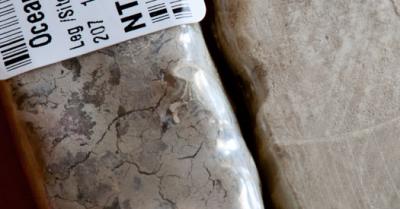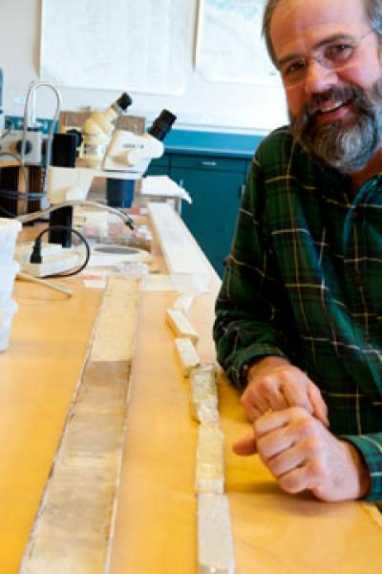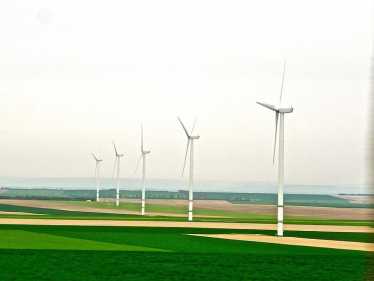
They are called hyperthermals - periods of intense and sudden rises in temperature, lasting tens of thousands of years. And until now they were thought to be rare geological events, dating back to a time when CO2 levels were several times higher than they are now. But in a paper published in Nature, two geologists from Scripps Institution of Oceanography have shown that hyperthermals were a regular occurrence some 50 million years ago.
Richard Norris and Phil Sexton made the discovery by looking sediment cores drilled off of the South American coast. Within the thick layers of green mud, they found slices of gray clay-rich sediment. Analysis showed that these striking clay bands formed because the usual microscopic calcium-rich shells were absent - dissolved away by acidic sea waters.

图片:沉积物样本:图片来源:Scripps海洋学机构,加州大学圣地亚哥分校
It is the acidic nature of the oceans which is the tell-tale signal for a hyperthermal event. When CO2 levels rise in the atmosphere, the oceans soak up atmospheric CO2, forming weak acids. This CO2-driven acidification of the oceans is already under way in our own epoch of global warming - and that same oceanic response in the past coincides with massive rises in temperature - the hyperthermal.
Starting 50 million years ago, these hyperthermal events seem to have been triggered every 400,000 years, and involved temperature rises of 3 F to 5 F (2 C to 3 C) that lasted up to 40,000 years. This cycle appears to have been repeated until 40 million years ago, spanning the transition from the Paleocene to the Eocene epochs. Global temperatures were at their peak (7 F to 12 F higher), during the Paleocene-Eocene Thermal Maximum. At that point hyperthermal events were much stronger, and needed 200,00 years to come down from their high.
The authors believe their research helps pin the cause of hyperthermals on long-term rhythms in the CO2 cycle for that 10 million year period. Other proposed culprits, such as the release of methane hydrates or peat burning, seem unlikely in a time of warm oceanic temperatures. And their regularity rules out another candidate, cometary impacts. Instead, they see a periodic slowdown in the vast turnover of oceanic currents as locking in CO2 into the deep oceans. There is some evidence that oceanic circulation systems can back up and reverse - and this may then have released the stored CO2.

理查德·诺里斯(Richard Norris)的图像:信用:Scripps海洋学研究所,加州大学圣地亚哥分校
无论他们的原因如何,到目前为止都没有看到这样的超热。由于化石燃料燃烧而释放的质量CO2引起的当前温度升高可能是在数千万年内开始的第一个高温事件。这项研究有助于扩大我们对我们可能要前进的方向的理解。
诺里斯说:“这些高温似乎并不是罕见的事件,因此,在广泛的规模上有很多古老的全球变暖例子,就像预期的未来变暖一样。在100到300年的时间里,我们可以在地球上产生一个信号,从地质记录来看,这需要数万年才能平衡。''






